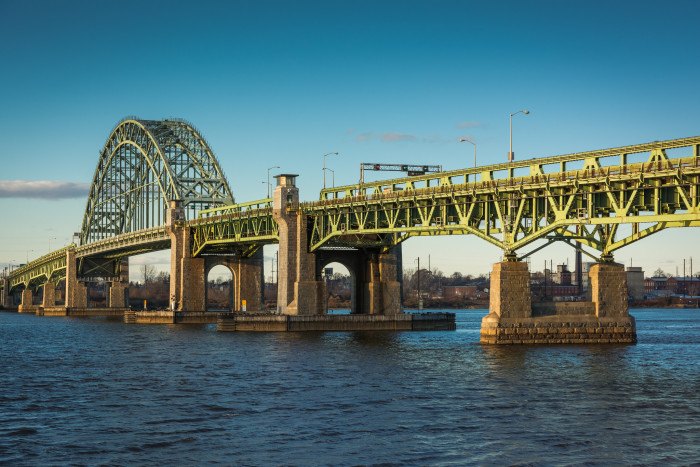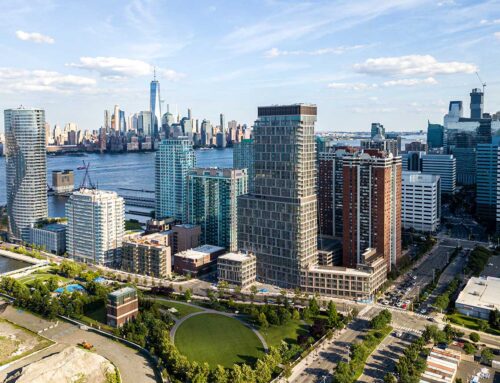Ten years after a unique $8.7-billion Trans-Hudson Stream traveler rail burrow venture got halted abruptly by then-New Jersey Gov. Chris Christie (R), form 2 has hit a tangle under President Donald Trump’s suggesting the rates it ineligible for government Capital Speculation Awards.
The $12-billion Hudson Stream Passage, right now in fundamental designing, got a “low” appraising from the Government Travel Organization on Feb. 10, dependent on scores for current monetary conditions, subsidizing responsibilities, and sensibility of money related arrangement.
The passage would supplant a now 109-year-old passage that is a basic connection for Upper east Hallway rail traffic and continued harm during Superstorm Sandy in 2012. The locale served by the passageway represents 20% of the national Gross domestic product, as per gauges.
Another key rail interface venture that is a piece of the alleged Entryway Program—the $1.6-billion Gateway North Extension over New Jersey’s Hackensack Waterway that would supplant a 110-year old range that conveys up to 200,000 voyagers for every day—got a medium-high appraising, rendering it qualified for Center Limit award financing.
The Door accomplices — Amtrak, New Jersey Travel, and the Port Authority of New York and New Jersey — presented another arrangement a year ago that cut the passage sticker price from more than $13 billion. Primer building is at about 30%, and venture authorities have been hanging tight two years for the U.S. Dept. of Transportation to survey its draft Natural Effect Proclamation, says Craig Shulz, a representative for Amtrak.
The EIS was finished in around two years, quicker than commonplace since engineers had the option to work off archives from the first passage plan. Be that as it may, very little more can occur without a Record of Choice dependent on the feds endorsing the EIS, and on the accomplices making sure about increasingly authoritative wellsprings of subsidizing.
In an announcement, Steven M. Cohen, the seat of the non-benefit Passage Program Advancement Corp. that is supervising the program, stated, “The Division of Transportation keeps on overlooking the most pressing foundation venture in the country, regardless of our unmistakable improvement to the arrangement to fund and fabricate the Hudson Passage Undertaking. We diminished the assessed cost by $1.4 billion, made sure about many millions in surplus assets from Amtrak, and diminished our award solicitation of the national government from 49% of the task to 44%.
Underlined Cohen: “Despite these endeavors, the Hudson Passage Task stays buried in government organization.”
“It is inadmissible that we still can’t seem to get a distinct course of events for culmination of the natural audit,” eight Upper east legislators said in a Feb. 6 letter to Government Railroad Executive Ronald Batory. “We beg you to report on when we can expect a last EIS and Bar for the Hudson Passage Task – including affirmation of the rest of the means important to move the venture into the plan and development stages.”
The U.S. Dab has precluded charges from claiming political predisposition against the vigorously Majority rule states and has said the passage needs increasingly money related responsibility and explicitly recognized sources from New York and New Jersey. The two states have promised more than $5 billion.
He noticed that the first two-tube burrow had encountered visit issues, including an electrical issue toward the start of the month that made undoings and defers a considerable number of day by day suburbanites.
In a Feb. 2019 report, the Territorial Arrangement Affiliation assessed that if the old passage closes down before the upgraded one is fabricated, it would cost the national economy $16 billion more than four years.
Passage authorities cheered the medium-high evaluating for the scaffold, which is indefinite plan and for which some $20 million in crucial development has just started, for example, utilities and geotechnical borings, says Schulz.
The extension development undertaking will be about 2.44 miles, including a 3,660-ft approach range situated on the west side of the stream, a 2,540-ft-long methodology length on the east side, and a 1,200-ft long focus length traverse the Hackensack Waterway, as indicated by the Door Program site.
The new fixed-length scaffold will twofold the current under leeway to around 500 ft. The old steel connect has a 300-ft swing length that must open and near marine traffic. The new extension is relied upon to expand limit by 30%, says Schulz.
The passage would incorporate three segments—an underground segment of strong stone conditions in the Palisades, blended ground conditions under the stream, and an area under Manhattan associating with Penn Station.
The Passage association set up a “virtual information room” where intrigued contractual workers can see consequences of progressing geotechnical tests, says Schulz. “We’re all attempting to do all that we can to propel these ventures,” he says.




